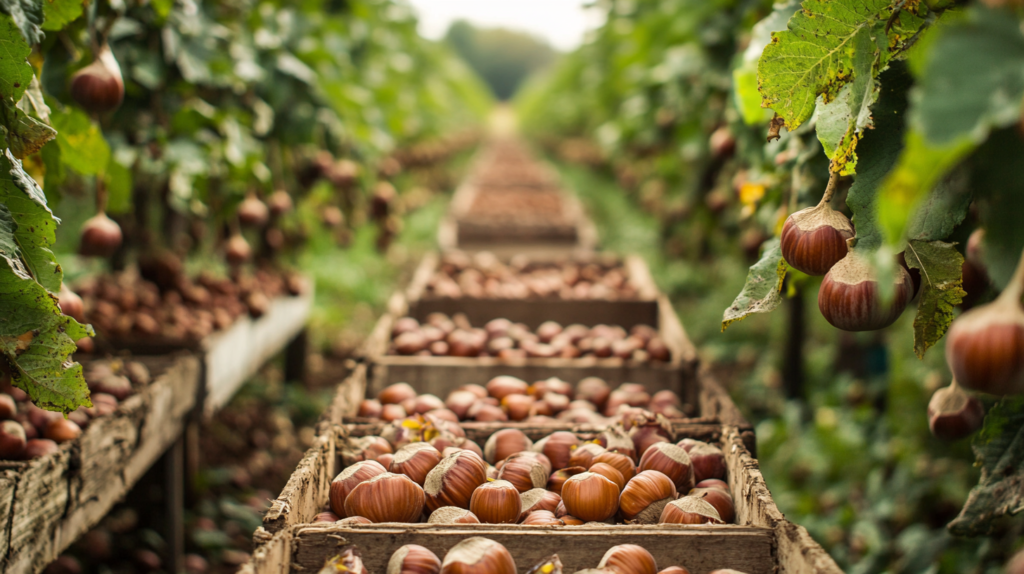Exploring the Most Profitable Hazelnut Varieties Market-Wise
The global hazelnut market is experiencing significant growth, with projections indicating a rise from USD 10.93 billion in 2023 to USD 19.60 billion by 2030, at a compound annual growth rate (CAGR) of 8.7%1. This expansion presents lucrative opportunities for hazelnut growers and investors to capitalize on the most profitable varieties. In this comprehensive analysis, we’ll explore the top hazelnut varieties that are driving market growth and profitability across different regions.
Global Market Overview
Before delving into specific varieties, it’s crucial to understand the current state of the global hazelnut market. Turkey remains the dominant player, accounting for over 70% of global production and 80% of exports as of 20231. However, other regions are emerging as significant contributors to the market, with the Asia Pacific region showing particularly strong growth potential due to increasing industrial applications of hazelnuts1.
Top Hazelnut Varieties for Profitability
– Barcelona
Barcelona has long been the primary variety grown in the Pacific Northwest of the United States. Despite facing challenges with blight, it remains an important variety for the industry2.
Market Position:
- Traditionally sold in-shell to Asian countries for Chinese New Year
- Harvest time: Mid-October
- Crackout: 39-43%
- Kernel Weight: 1.2g
- Blanching Score: 4-5
While Barcelona’s acreage is decreasing due to blight issues, its established market presence and cultural significance in Asian markets make it a profitable option for growers who can manage the blight effectively.
– Ennis
Known for its large grade and oblong nut shape, Ennis is a favorite among consumers and commands premium prices in certain markets2.
Market Position:
- Sold in-shell as a specialty counterpart to Barcelona
- Largest hazelnuts in existence
- Harvest time: Mid-October
- Crackout: 38-41%
- Kernel Size: 1.6g
- Blanching Score: 3-4
Despite being highly susceptible to blight, Ennis remains profitable due to its unique size and shape, which allows growers to target niche markets willing to pay a premium for these distinctive nuts.
– Jefferson
Jefferson is currently the most widely-planted variety in Oregon’s Willamette Valley, offering a blend of disease resistance and market versatility2.
Market Position:
- Bred to replace Barcelona due to blight resistance
- Used for both kernels and in-shell markets
- Harvest time: Mid to Late October
- Crackout: 41-46%
- Kernel Size: 1.3g
- Blanching Score: 4-5
Jefferson’s profitability stems from its adaptability to various market segments and its ability to provide more consistent yields compared to traditional varieties.
– McDonald
McDonald is gaining popularity for its flavor profile and processing characteristics, making it a favorite among manufacturers2.
Market Position:
- Kernel variety with excellent flavor
- Consistent sizing and high crackout percentage
- Harvest time: Mid to Late September
- Crackout: 47-50%
The high crackout percentage of McDonald hazelnuts makes them particularly profitable for processed products, as it results in less waste and higher yields for manufacturers.
– Yamhill
While not extensively detailed in the provided search results, Yamhill is worth mentioning due to its exceptional yield potential5.
Market Position:
- Expected yields of 40 pounds per tree (compared to 20 pounds for other varieties)
- Blight and cold resistant
- Superior nut for roasting
Yamhill’s high yield potential, combined with its disease resistance, makes it an attractive option for growers looking to maximize profitability per acre.

Regional Profitability Analysis
– North America
In the United States, Oregon dominates hazelnut production, with the Willamette Valley providing ideal growing conditions6. The most profitable varieties in this region include:
- Jefferson: Its blight resistance and versatility make it a top choice for Oregon growers.
- McDonald: High demand from processors due to its consistent size and high crackout percentage.
- Yamhill: Gaining popularity due to its high yield potential and disease resistance.
– Europe
While specific variety data for Europe is limited in the provided search results, the region’s hazelnut industry is significant, with Italy being a major producer after Turkey. European varieties often focus on:
- Traditional varieties with protected geographical indications (PGIs)
- Varieties suited for confectionery and chocolate industries
– Turkey
As the world’s leading producer, Turkey’s hazelnut industry significantly influences global markets. While specific variety information is not provided, profitability in Turkey is often tied to:
- Varieties suited for export markets
- Nuts meeting international quality standards
- Varieties adaptable to changing climate conditions in the Black Sea region
Factors Influencing Profitability
Several factors contribute to the profitability of hazelnut varieties beyond just yield potential:
– Disease Resistance
Varieties like Jefferson and Yamhill, which offer resistance to Eastern Filbert Blight, can be more profitable in the long term due to reduced crop losses and lower management costs2.
– Market Demand
Consumer preferences and industrial requirements play a crucial role in determining profitability. For instance, the confectionery industry’s demand for consistent, high-quality nuts favors varieties like McDonald1.
– Climate Adaptability
As climate change impacts traditional growing regions, varieties that can adapt to changing conditions will become increasingly profitable. This factor is particularly relevant in Turkey, where hazelnut production is a significant part of the economy1.
– Processing Characteristics
Varieties with high crackout percentages and good blanching scores, such as Jefferson and McDonald, are often more profitable for processed products2.
Future Trends and Emerging Varieties
The hazelnut industry is continuously evolving, with new varieties being developed to meet changing market demands and environmental challenges. Some trends to watch include:
– Polly-O
As the latest release from Oregon State University, Polly-O shows promise with its early harvest time and nut characteristics similar to the popular McDonald variety2.
– Focus on Sustainability
Varieties that require fewer inputs or are more resistant to pests and diseases are likely to become more profitable as sustainability becomes a key concern for consumers and regulators.
– Niche Market Varieties
As consumers become more interested in unique flavors and experiences, there may be increased profitability in cultivating varieties that cater to specific niche markets or culinary applications.
Conclusion
The profitability of hazelnut varieties is a complex interplay of yield potential, market demand, disease resistance, and processing characteristics. While traditional varieties like Barcelona and Ennis continue to hold significant market share, newer varieties such as Jefferson, McDonald, and Yamhill are gaining ground due to their improved characteristics and adaptability to modern market demands.
For growers and investors looking to maximize profitability in the hazelnut market, a diversified approach that includes a mix of established and emerging varieties may offer the best strategy. Additionally, staying informed about market trends, consumer preferences, and advancements in hazelnut breeding will be crucial for long-term success in this growing industry.
As the global hazelnut market continues to expand, with projections reaching USD 19.60 billion by 2030, the opportunity for profitable hazelnut cultivation remains strong. By carefully selecting varieties that align with regional conditions and market demands, growers can position themselves to capitalize on this growth and contribute to the ongoing success of the global hazelnut industry.
Sources:
[1] https://www.maximizemarketresearch.com/market-report/hazelnut-market/123229/
[2] https://www.hazelnut.com/about-hazelnuts/varieties/
[3] https://www.cardassilaris.com/news/hazelnut-market-update-january-2024-insights
[4] https://www.heliosingredients.com/market-updates/hazelnut-market-update-week-31-august-2024/
[5] https://www.earthgen.ca/starting-a-plantation
[6] https://www.agmrc.org/commodities-products/nuts/hazelnuts






